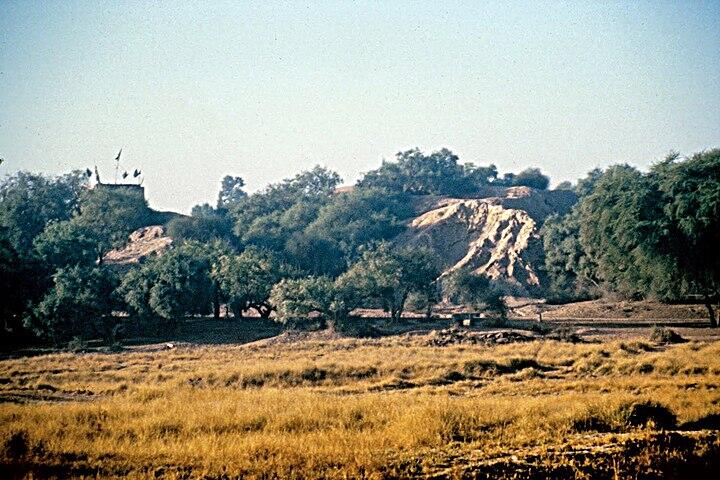The high mound at Harappa (Mound AB) is surrounded by a massive mud brick city wall with large square ramparts. One of these eroding ramparts is visible through the underbrush that now covers the site. The flags mark the tomb of a Muslim saint that was built on top of the ancient city wall thousands of years after the city was abandoned
New studies are revealing the complexity and unique character of this protohistoric urban society that were not appreciated by earlier scholars. The massive mounds of Mohenjo Daro and Harappa had been known to scholars for years, but the excavations in the 1920s and 1930s identified these ancient cities as the product of a previously unknown civilization. The basic features of this civilization were revealed through surveys and excavations at sites within the Indus River valley of Pakistan and the adjacent regions of western India; it came to be known as the Harappa Culture or Indus Civilization. However, because of the lack of specific information and the fact that their writing system is still undeciphered, this culture has remained a major enigma in South Asian archaeology, and we have been plagued with many unanswered questions regarding its origins, its character and extent, and its decline.

